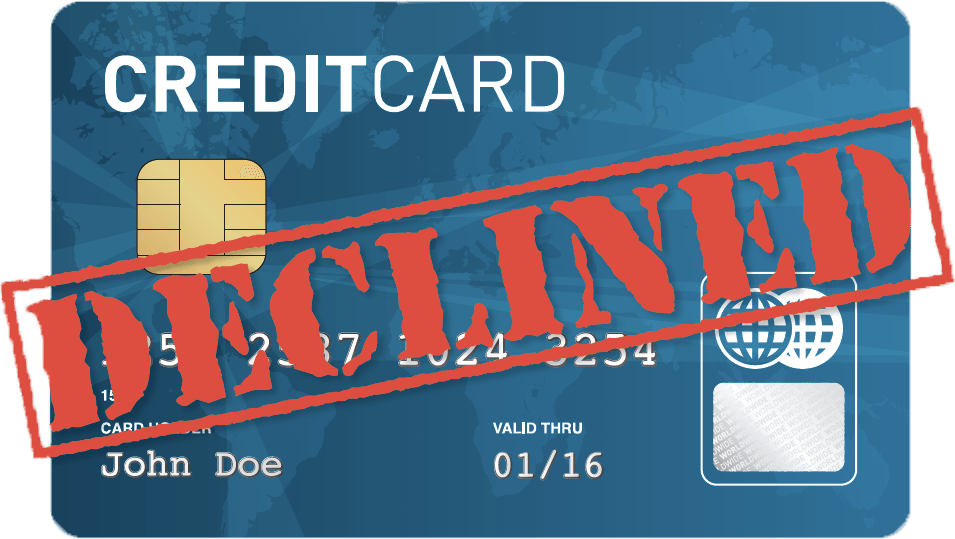 If you’re a business owner, you know how frustrating it can be to wait to collect on payments. Accepting credit cards is meant to ease some of that frustration with faster acceptance and payment from customers.
If you’re a business owner, you know how frustrating it can be to wait to collect on payments. Accepting credit cards is meant to ease some of that frustration with faster acceptance and payment from customers.
Payment processing and the collection rate on those payments are immensely important for subscription/recurring billing merchants, too, but in today’s environment credit card decline rates have become a massive challenge. Fraud, reissued cards, EMV cards as well lost and stolen cards are some of the reasons for declines, presenting multiple problems for billers.
Some statistics:*
- On average 15% of recurring credit card payments decline with some industries exceeding 30%
- 30% of all credit cards are reissued each year
- 1.5 billion EMV chip cards issues in 2015-2016
- The likelihood of obtaining new information from the customer on the first attempt after their card has been declined is just 5%
*Information based on Visa | MasterCard publications and PLC
Minimizing credit card declines is hugely important for businesses and billing platforms. A comprehensive system is needed for three reasons:
- Your cash flow increases when credit card decline rates drop. Every percentage point you can shave off of that decline rate average of 15% means more revenue collected.
- You’ll reduce workflow problems caused in the collection efforts by minimizing declines. Emailing or calling customers to update information is a lot of work that can take up a significant amount of your team’s time. As noted in the above statistic, only an estimated 5% of first attempts are successful when it comes to contacting customers for updated information.
- Declines have a negative effect on customer retention. Invariably some of the client’s billing data can’t be updated and you can lose customers. Losing hard-won (and expensive to acquire) customers because you’re unable to get new card data is damaging to your business for obvious reasons; in addition to losing revenue, you now have to also try to acquire new customers.
 The best way to combat the loss of revenue to card declines is to implement a strategic, proactive, and reactive outreach program.
The best way to combat the loss of revenue to card declines is to implement a strategic, proactive, and reactive outreach program.
Your payment gateway or billing partner should have a process for pulling expiring card reports. This should include creating a series of autoresponder emails for customers whose cards are set to expire, directing them to provide an updated card information.
These emails should consistently speak to the benefits the client gets from using your services or application. Start these emails a minimum of a month out with the messaging becoming progressively more urgent as their card’s expiration date gets closer. There is likely an automated way to stop these emails once the customer has updated billing info.
If possible the customer should update their card information online (billing platforms should offer this option) and link the updated info back to your payment application. You may also consider an automated calling campaign (something like CallFire) to direct customers to provide new info.
Staff can be trained to call customers as well and you can easily provide a script.
Determine Lifetime Value
If it is not already known, it’s a good idea to calculate the Lifetime Value of your customers to determine how much revenue an average client produces. This will help direct the amount of effort that should be put into keeping them. Obviously, the higher the monetary figure, the more effort is warranted.
If the card is close to expired or has expired and you are receiving a decline you definitely want to put the effort into making live calls to that customer. If there are failed billings, you can also consider an incentive to reward the customer for updating.
Something as simple as a $10-off coupon pays for itself many times over and generally provides enough incentive for the customer to update their information. You may also see benefits from providing your staff with incentive for retaining a customer. You may even uncover a sales superstar that you were not aware of in the process.
 A direct-mail campaign is another way to communicate with customers whose cards have expiration dates looming. You can send a series of postcards relatively cheaply pointing out the need to update billing info, or telling them their card has expired. Some mailing services require nothing more than an Excel file with the necessary info to generate these postcards. Mailings can usually be automated too.
A direct-mail campaign is another way to communicate with customers whose cards have expiration dates looming. You can send a series of postcards relatively cheaply pointing out the need to update billing info, or telling them their card has expired. Some mailing services require nothing more than an Excel file with the necessary info to generate these postcards. Mailings can usually be automated too.
SaaS payment processing providers should consider messaging your customers inside of the payment application itself. If a card is about to expire, you can generate in-application notifications, instructing customers on how to update info.
Tout the benefits of the application and the pain they might experience if they were not able to keep using it. Countdown timers to card expiration can be very effective for this.
Find Lost Customers
You should also consider creating a plan for those billing clients you may have already lost. These are users of your service who would likely still be users if you could reach them.
Use a combination of AutoResponders, calling campaigns and direct mail.
You may even consider retargeting ads with some type of “We want you back” messaging. Offer an incentive. And always remember that it’s easier to bring back an old customer than to acquire a new one.
By being both proactive and reactive in your attempts to obtain new billing information you will significantly reduce your credit card decline rates. This means more money and less work for your business.
This is just one step of many you can implement in your business or billing platform. If you need help implementing tools to help reduce credit card declines and maximize your payment collection efforts, Agile Payments can help. Contact us today.
{{cta(’16cae90d-02cd-4e7c-8302-e4f866f36508′,’justifycenter’)}}





